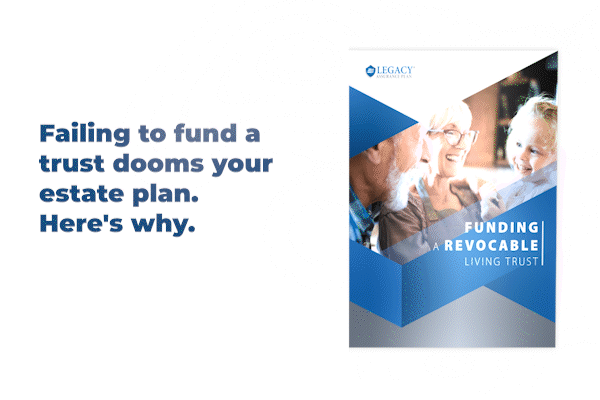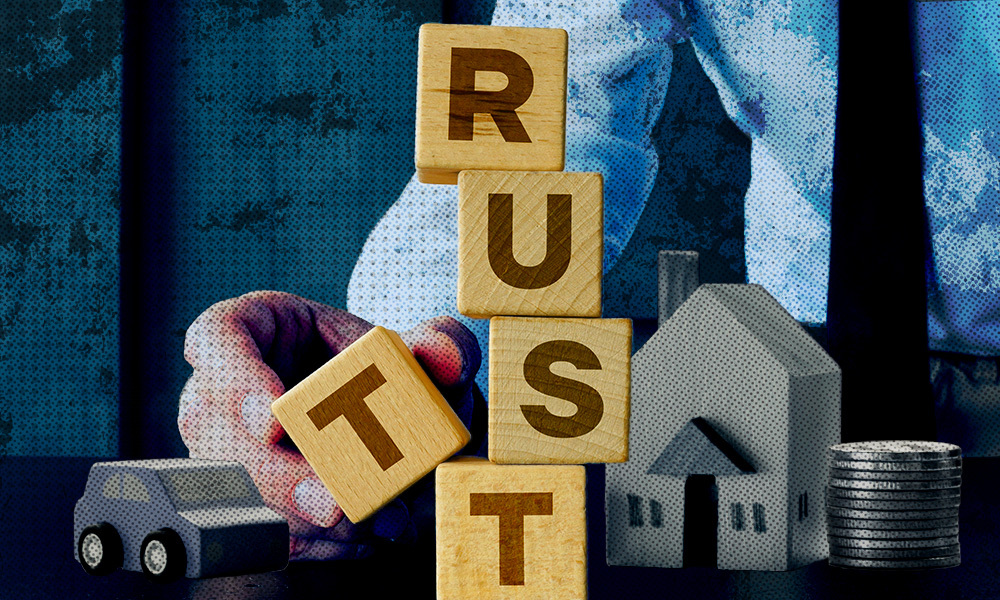Estate planning is often misunderstood as a one-time task, but in reality, it is an ongoing journey that requires continuous attention and updating. Far from being a set-and-forget affair, effective estate planning is an active process, especially when it involves managing a revocable living trust. After the initial execution of estate planning documents, several crucial steps must be undertaken to ensure that the plan is not just created but also effectively maintained and implemented.
A foundational step in effective estate planning is to compile a complete list of your assets. This task involves categorizing assets into two main types: titled assets and personal property. Titled assets include items such as your home, vehicles and financial accounts, which have formal documentation proving ownership. Personal property encompasses items like furniture, jewelry and collectibles, which typically do not have formal titles or deeds.
Creating this detailed inventory is not just an organizational exercise; it's a critical step in ensuring that all your assets are accounted for and properly incorporated into your estate plan. This comprehensive list will serve as a reference point for the next steps in the estate planning process, particularly when it comes to funding your trust.
What is the process of funding a trust?
Funding your trust is a critical and multifaceted step in estate planning, pivotal for ensuring that your trust operates as intended. It involves a meticulous process of legally transferring your assets from your personal ownership to the ownership of the trust, with you as the trustee. This process varies significantly depending on the type of asset.
Funding real estate into your trust

When it comes to real estate, funding involves a legal transfer of the property's deed into the name of your trust. This process typically requires the services of an attorney or a legal professional who specializes in estate planning. They will prepare a new deed that transfers ownership from you, as an individual, to you as the trustee of your trust. This deed then needs to be duly recorded in the county where the property is located. It's crucial to ensure that this transfer does not disrupt any existing mortgage arrangements. Additionally, you should notify your homeowners' insurance provider about the change in ownership to maintain continuous coverage.
Transferring vehicle titles to your trust
For vehicles, the process is somewhat different but equally important. Retitling a vehicle in the name of your trust generally involves visiting your local Department of Motor Vehicles (DMV). You will need to provide the DMV with the appropriate trust documentation, along with the existing vehicle title and a completed application for title transfer. The DMV will then issue a new title for the vehicle under the name of the trust. This step is crucial to ensure that the vehicle is properly managed under the terms of the trust upon y our incapacity or death.
Transferring financial accounts to your trust
Financial accounts, including bank and investment accounts, are another category of assets that require careful attention when funding your trust. Each financial institution has its own procedures and forms for transferring accounts into a trust. You'll need to contact each institution to obtain these forms and provide them with a copy of your trust agreement or a certification of the trust. The process might include changing the account registration and beneficiary designations to reflect the trust as the new owner or beneficiary. This step is vital to ensure that these assets are managed and distributed according to your trust's instructions without going through probate.
Each type of asset requires a specific process for trust funding. It's essential to carefully follow these procedures to ensure that all your assets are properly managed within the trust. This not only ensures that your estate planning objectives are met but also provides peace of mind knowing that your assets are appropriately protected and will be distributed according to your wishes.
How to deal with personal property in estate planning

Personal property, which includes items like furniture, jewelry, collectibles, artwork and other tangible items, often holds both financial and sentimental value. This category of assets presents a unique set of challenges in estate planning due to their nature and the absence of formal legal titles or deeds.
The first step in including personal property in your estate plan is to create a detailed inventory. This list should be as comprehensive as possible, including descriptions of the items, their estimated value and any significant details such as the origin, artist or historical significance. Photographs of each item can also be included to provide a visual reference. This inventory not only assists in the funding process but can also be invaluable in case of loss due to theft or damage, serving a dual purpose for insurance claims.
Once the inventory is complete, these items must be listed in a specific section of your trust document. This is typically done in a section referred to as “Schedule A” or “Appendix A.” The schedule serves as a written declaration of your intent to transfer ownership of these items to the trust. It’s important to be as specific as possible in this listing to avoid ambiguity and potential disputes among beneficiaries.
For example, instead of simply listing "jewelry," itemize each piece, such as “14k gold wedding band with engraving, ‘Forever Yours, 1985.’” This specificity not only makes the distribution process smoother but also ensures that each item goes to the intended beneficiary.
Many times, personal property has sentimental value that may surpass its monetary worth. In such cases, you might want to leave specific items to certain beneficiaries. For instance, a family heirloom could be earmarked for a specific family member. These specific bequests should be clearly stated in your trust to ensure that your wishes are carried out.
Personal property collections can change more frequently than other asset types. As you acquire new items or dispose of others, it's important to update Schedule A of your trust accordingly. This might mean conducting a periodic review of your personal property inventory and making necessary adjustments in your trust document.
For items of significant value, it may be wise to obtain professional appraisals. These appraisals can provide a more accurate estimation of value for estate planning purposes and can be particularly important for items like art, antiques or rare collectibles. Keep these appraisals with your estate planning documents for reference.
Addressing personal property in estate planning requires meticulous documentation and clarity. By taking the time to thoroughly inventory and document these assets in your trust, you ensure that they are distributed according to your wishes, preserving both their monetary and sentimental value for your beneficiaries.
Attention to detail is key aspect in trust funding
The phrase "don't sweat the small stuff" might apply in various life scenarios, but it doesn't hold true when it comes to funding your trust. The level of detail required in estate planning is akin to Santa Claus' approach of "making a list and checking it twice." Every asset, no matter how insignificant it may seem, should be accounted for. This meticulous approach ensures that nothing is overlooked, which could lead to complications later.

Ensuring the completeness of your asset list is critical. This includes not only the obvious assets like homes and bank accounts but also less tangible assets. Items often overlooked, such as membership in clubs, frequent flyer miles or digital assets, should also be included in your estate planning.
How to incorporate unique assets into a trust
When it comes to estate planning, certain assets may not be as straightforward as bank accounts or real estate. Unique assets such as business interests, intellectual property and receivables require specialized handling to ensure they are effectively incorporated into your trust. Incorporating unique assets into your trust requires understanding the specific legal processes and documentation involved for each asset type. It’s often beneficial to seek professional legal advice to navigate these complexities, ensuring that all your assets, including the unique and less obvious ones, are properly included in your estate plan.
Transferring business interests
If you own an interest in a business, whether it's an LLC, partnership or corporation, you can transfer this interest into your trust. However, the process is governed by the business’ operating agreement or articles of incorporation. It’s crucial to review these documents to understand any restrictions or procedures required for transferring ownership interests. For instance, there may be clauses that restrict transferability or require approval from other business partners.
After understanding the legal framework, you would typically sign a transfer document, such as an assignment of interest, that formally transfers your shares or interest in the business to the trust. This step is vital in ensuring that your business interest is managed as part of your estate plan and that any income or benefits from the business flow into the trust.
Handling intellectual property

Intellectual property assets such as copyrights, patents and trademarks also require specific attention in estate planning. Each type of intellectual property has its own transfer process:
- Copyrights. To transfer copyrights, you typically need to record the transfer with the U.S. Copyright Office. This involves submitting a recordation form along with a copy of the transfer document, such as an assignment or a trust agreement.
- Patents. Transferring patent rights requires recording the assignment with the U.S. Patent and Trademark Office. This ensures that the patent rights are effectively transferred to the trust and that any royalties or benefits are directed accordingly.
- Trademarks. Similar to patents, trademarks are transferred by recording the assignment with the U.S. Patent and Trademark Office. Proper recording ensures the trust holds the trademark and any associated goodwill or licensing rights.
Can I assign rights to collect debts?
If you are owed money, such as from a loan or a legal judgment, these receivables can be assigned to your trust. This involves drafting an assignment agreement that specifies the transfer of your right to collect these debts to the trust. It’s a key step in ensuring that any payments or settlements are directed to the trust rather than to you personally. This assignment not only simplifies the management of these assets but also helps in ensuring they are dealt with according to your overall estate plan.
Conclusion
From the initial step of compiling a comprehensive list of both titled and personal property, to the meticulous process of funding your trust, each phase is critical to the overall success of your estate plan.
Transferring assets such as real estate, vehicles and financial accounts into your trust is not just a legal formality; it's also a strategic move to ensure seamless management and distribution of your estate. It requires coordination with various entities and a thorough understanding of the legal procedures involved. Similarly, personal property, often rich with sentimental value, demands its own detailed strategy. The creation of an inventory and the subsequent listing in Schedule A or Appendix A of your trust document are pivotal steps to help guarantee your wishes are precisely followed.
In addition, the inclusion of unique assets like business interests, intellectual property and rights to receivables, introduces additional layers of complexity. Understanding the specific legal requirements and ensuring compliance with various agreements and laws are essential in effectively incorporating these assets into your trust.
Remember, estate planning goes beyond the simple allocation of assets and is an ongoing process of adaptation and meticulous attention to detail. Regular reviews and updates are necessary to keep pace with life's changes and to ensure that your estate plan continuously aligns with your intentions.



